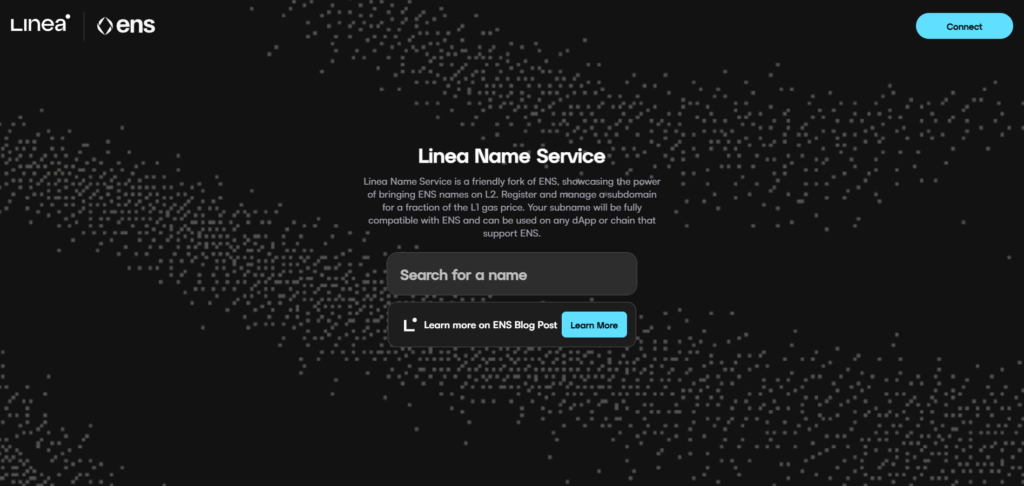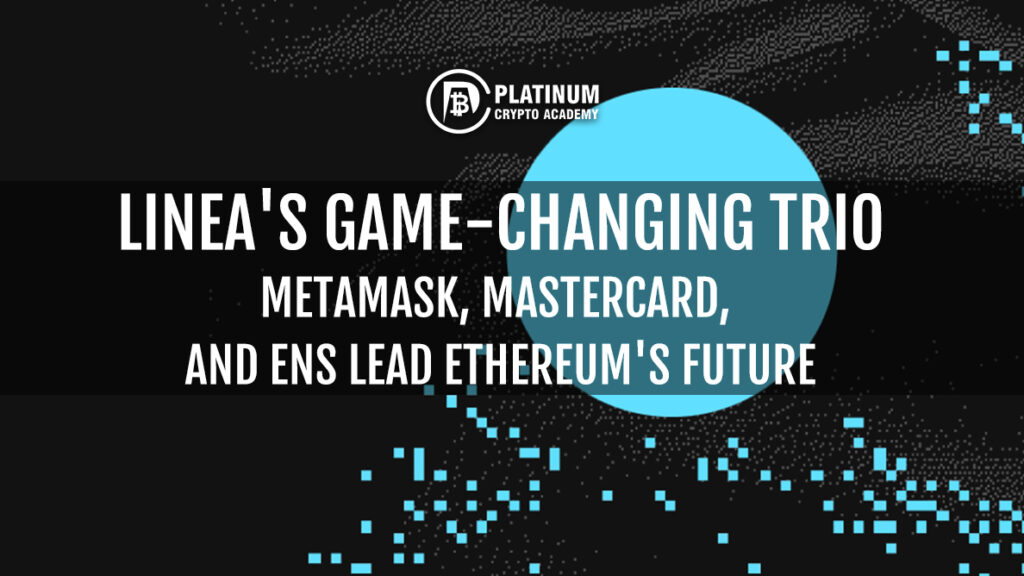As someone who has been working in the crypto space since late 2016, I have witnessed the ups and downs of the market over the years. The rise and fall of various altcoins, and the constant evolution. I have seen quite a few projects revolutionize the industry, improve gas fees, and make the usual claims. But every once in a while, something comes along that catches my attention. Enter line—A player in the Ethereum Layer 2 space that not only solves scalability issues, but does so in a way that truly enhances the user experience. With strategic integrations such as the introduction of MetaMask and ENS domains, and a clear focus on a decentralized future, Linea is a key player to watch.
MetaMask and Linea: The Perfect Combination for Layer 2 Adoption
If you’ve been around cryptoblocks, you probably know MetaMask. It’s the go-to wallet and dApp browser for millions of Ethereum users. So when I heard that MetaMask was integrating with Linea, I knew it was a big deal. This isn’t just a partnership, it’s a powerful move to bring the benefits of Ethereum Layer 2 to the masses.
One of the coolest things about this integration is the new Mastercard for MetaMask, which is available exclusively on Linea. Imagine, you can now seamlessly convert your crypto to KRW for everyday purchases. It’s like bringing your digital assets into the real world, and it all happens on Linea. This kind of integration is exactly what we need to bridge the gap between decentralized finance and traditional banking, and it’s a huge win for everyone using MetaMask.
But it’s not just about making transactions easier. This collaboration with MetaMask is about setting a new standard for user experience in decentralized finance. By simplifying the way users interact with Ethereum and making those interactions more intuitive, Linea is helping to advance the entire industry. This partnership is a clear step toward making blockchain technology more practical and accessible to everyday users.
ENS Domains: Making Blockchain a Little More Human
Let’s be honest, Ethereum addresses are hard to handle. Those long alphanumeric strings are just plain open to mistakes. This is where ENS (Ethereum Name Service) domains come in, and Linea has cleverly integrated them into their platform. With ENS, you can turn those confusing addresses into something as simple as “yourname.eth.” It’s a small change, but it makes a big difference, especially for those who want a smoother, less stressful experience when dealing with cryptocurrencies.
The integration of ENS and Linea is a no-brainer. It streamlines everything, making blockchain interactions more intuitive and less error-prone. But beyond convenience, this move reflects Linea’s broader commitment to decentralization and user empowerment. The goal isn’t just to make things easier, but to create a decentralized ecosystem where users have more control and autonomy over their interactions. By making blockchain technology more accessible and user-friendly, Linea is helping to democratize access to decentralized finance, one ENS domain at a time.

Linea’s Gas API: Eliminate the guesswork of gas fees
If you’ve ever been frustrated with Ethereum’s gas fees, you’re not alone. It’s one of the biggest pain points in the ecosystem, especially during peak times when fees can spike. Linea’s solution? A dedicated gas API that makes it easier and more accurate to estimate fees.
The beauty of this API is that it simplifies the process. Instead of manipulating multiple endpoints to figure out gas fees, Linea’s API does it all in one go. It gives developers a clear idea of how much they will pay, which is important for both developers and users who want a seamless, cost-effective experience. And in fact, saving time and money in the crypto space is a welcome improvement.
The accuracy of this Gas API is particularly impressive. Transactions are processed efficiently, reducing the possibility of overpayments or backlogs. This ties into Linea’s larger vision of creating scalable and decentralized solutions that enhance user experience while maintaining the core values of blockchain technology. The Gas API is a perfect example of how Linea is making blockchain more accessible without compromising the principles of decentralization.
Linea’s vision for decentralized identity and the future
Another interesting dimension of the Linea platform is its focus on decentralized identity solutions. As we move into a more interconnected and digital world, the need for secure and decentralized ways to verify identity is becoming increasingly important. Linea recognizes that decentralized identity is not just a trend, but a critical component of the future of Web3, and is actively exploring this space.
Linea’s approach to decentralized identity is to give users control over their personal data. In a world where data breaches and privacy concerns are all too common, Linea’s commitment to decentralized identity provides a much-needed alternative to traditional centralized identity systems. Leveraging blockchain technology, Linea is working to enable users to securely and privately verify their identity without relying on third parties who may not have their best interests at heart.
This focus on decentralized identity also ties into a broader vision of creating a truly decentralized ecosystem. As Linea continues to evolve, it’s clear that we’re not only thinking about today’s challenges, but also preparing for the future of digital identity and data sovereignty. This forward-thinking approach is what sets Linea apart as a leader in the Ethereum Layer 2 space.
The Future of Decentralization and Layer 2 Networks
One of the most compelling arguments for Linea and Layer 2 solutions in general centers around decentralization. There has been a lot of talk about the tradeoffs between centralization and decentralization, especially when it comes to Layer 2 technologies. While some teams choose to centralize to streamline operations, Linea has taken a firm stance on the importance of decentralization as a core component of security and resilience.
Decentralization is not just a buzzword, it is a necessary element for building a secure and sustainable blockchain ecosystem. By decentralizing core components like the sequencer and leveraging technologies like zero-knowledge rollups, Linea is pushing the boundaries of making the platform robust and scalable without sacrificing decentralization principles. This approach not only mitigates risks like single points of failure, but also aligns with the broader ethos of the blockchain community: building an open, transparent, and secure network.
Linea’s commitment to decentralization is particularly evident in its commitment to creating a multi-prover environment where multiple independent provers can verify transactions. This not only enhances security, but also encourages competition and innovation, ensuring that no single entity can gain unfair control of the network. As Layer 2 technology continues to evolve, Linea’s approach to decentralization is likely to set the standard for others to follow.
Expanding the Linea Ecosystem: Where Innovation and Collaboration Meet
What’s really exciting about Linea is the community they’re building. The recent Linea Community Call highlighted some incredible developments, from ongoing support for hackathons to new tools for developers. This isn’t a one-off event. It’s part of a broader strategy to foster innovation and collaboration within the Linea ecosystem.
Hackathons, for example, are more than just competitions. They are a breeding ground for the next big thing in blockchain. The projects that come out of these events are pushing the boundaries of what’s possible on Linea, and it’s inspiring to see so much creativity and talent being brought to the platform. It’s clear that Linea is focused not just on solving technical challenges, but also on fostering a vibrant and engaged community ready to pioneer the future of decentralized applications.
The Bigger Picture: Linea’s Role in Ethereum’s Future
When you look at everything Linea is doing, from integrating MetaMask and ENS to developing tools like Gas API and exploring decentralized identity, it’s clear that they’re not just another layer 2 solution. They’re positioning themselves as a key player in the future of Ethereum. As the network continues to grow, the demand for scalable and user-friendly solutions will only increase, and Linea is perfectly poised to meet that demand.
Linea’s vision is clear: to create a more accessible and decentralized ecosystem that empowers both users and developers. Whether you’re a developer looking to build the next big dApp or a user looking for a seamless blockchain experience, Linea has something to offer. They’re solving real-world problems with innovative solutions, and they’re doing it in a way that makes blockchain technology more accessible and practical for everyone.
To finish
That’s why I’m excited about Linea. They’re taking on some of the biggest challenges in the Ethereum ecosystem and making real progress. With the kind of partnerships, tools, and communities they’re building, I’m confident that Linea will play a major role in the future of Ethereum. It’s an exciting time to be in the blockchain space, and I’m personally excited to see where Linea goes from here.
I hope you enjoyed your time today. article. Thanks for reading! Have a great day! Live from the Platinum Crypto Trading Floor.
Disclaimer of Liability for Import: The information found in this article is provided for educational purposes only. We make no promises or guarantees of income or earnings. You should do some homework, use your best judgment, and do your due diligence before using the information in this article. Your success is still up to you. Nothing in this article is intended to be professional, legal, financial, and/or accounting advice. Always seek competent advice from a professional in these matters. If you violate any city or other local laws, we will not be liable for any damages you incur.

